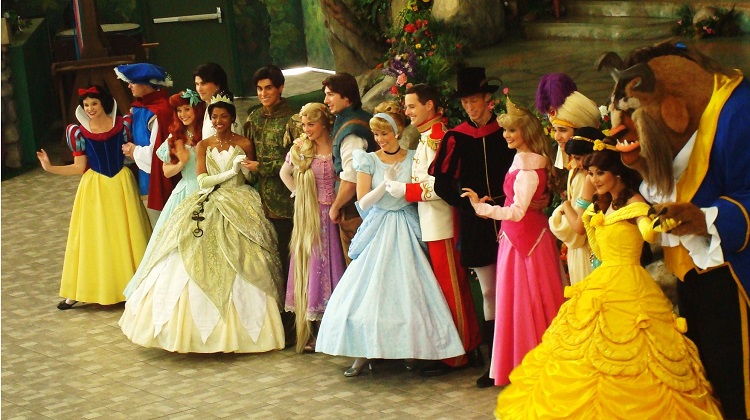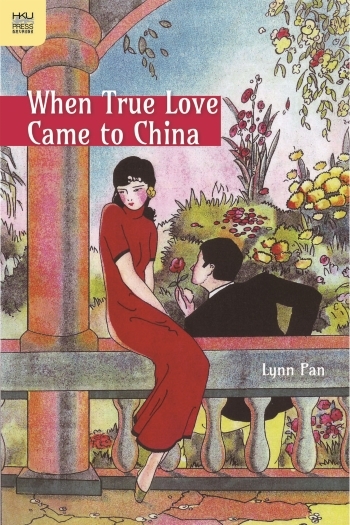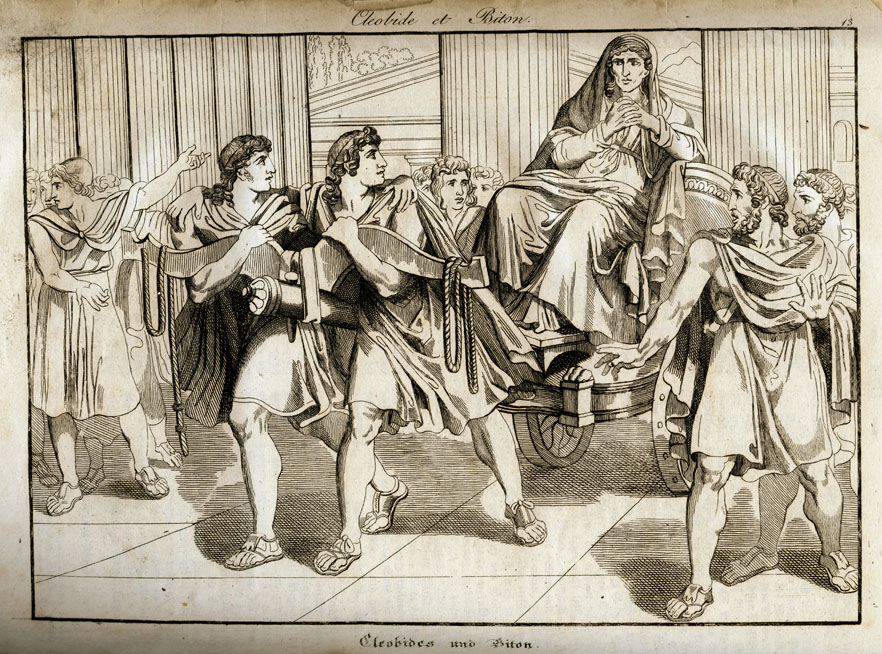Today, as in the past, we remain steeped in mythologies instructing how to conceptualize the nature of men and women. In continuing to underline the importance of stories for informing our views of people and the world, we bring you an excerpt from philosopher Richard Kearney’s excellent book, On Stories. – PW
________________________________________
Where do stories come from?
If this be magic, let it be an art lawful as eating.
A Winter’s Tale
Telling stories is as basic to human beings as eating. More so, in fact, for while food makes us live, stories are what make our lives worth living. They are what make our condition human.
This was recognised from the very beginnings of Western civilisation. Hesiod tells us how the founding myths (mythos in Greek means ‘story’) were invented to explain how the world came to be and how we came to be in it. Myths were stories people told themselves in order to explain themselves to themselves and to others. But it was Aristotle who first developed this insight into a philosophical position when he argued, in his Poetics, that the art of storytelling – defined as the dramatic imitating and plotting of human action – is what gives us a shareable world.
It is, in short, only when haphazard happenings are transformed into story, and thus made memorable over time, that we become full agents of our history. This becoming historical involves a transition from the flux of events into a meaningful social or political community – what Aristotle and the Greeks called a polis. Without this transition from nature to narrative, from time suffered to time enacted and enunciated, it is debatable whether a merely biological life (zoe) could ever be considered a truly human one (bios). As the twentieth-century thinker Hannah Arendt argued: ‘The chief characteristic of the specifically human life … is that it is always full of events which ultimately can be told as a story …. It is of this life, bios, as distinguished from mere zoe, that Aristotle said that it “somehow is a kind of action (praxis)”.’
What works at the level of communal history works also at the level of individual history. When someone asks you who you are, you tell your story. That is, you recount your present condition in the light of past memories and future anticipations. You interpret where you are now in terms of where you have come from and where you are going to. And so doing you give a sense of yourself as a narrative identity that perdures and coheres over a lifetime. This is what the German philosopher Dilthey called the coming-together-of-a-life (Zusammenhang des Lebens), meaning the act of coordinating an existence which would otherwise be scattered over time. In this way, storytelling may be said to humanise time by transforming it from an impersonal passing of fragmented moments into a pattern, a plot, a mythos.
Every life is in search of a narrative. We all seek, willy-nilly, to introduce some kind of concord into the everyday discord and dispersal we find about us. We may, therefore, agree with the poet who described narrative as a stay against confusion. For the storytelling impulse is, and always has been, a desire for a certain ‘unity of life’. In our own postmodern era of fragmentation and fracture, I shall be arguing that narrative provides us with one of our most viable forms of identity – individual and communal.
If the need for stories has become acute in our contemporary culture, it has been recognised from the origin of time as an indispensable ingredient of any meaningful society. In fact, storytelling goes back over a million years, as scholars like Kellogg and Scholes have shown. The narrative imperative has assumed many genres – myth, epic, sacred history, legend, saga, folktale, romance, allegory, confession, chronicle, satire, novel. And within each genre there are multiple sub-genres: oral and written, poetic and prosaic, historical and fictional. But no matter how distinct in style, voice or plot, every story shares the common function of someone telling something to someone about something. In each case there is a teller, a tale, something told about and a recipient of the tale. And it is this crucially intersubjective model of discourse which, I’ll be claiming, marks narrative as a quintessentially communicative act. Even in the case of postmodern monologues like Beckett’s Krapp’s Last Tape or Happy Days, where the actor is talking and listening to him/herself, there is always at least an implicit other out there to whom the tale is addressed – that ‘other’ often being ‘us’ the listeners. In short, where the author or audience appear absent they are usually ‘implied’. That is why the continuing, and I believe inexhaustible, practice of storytelling belies the faddish maxim that ‘in narrative no one speaks’, or worse, that language speaks only to itself.
To imagine the origins of storytelling we need to tell ourselves a story. Someone, somewhere, sometime, took it into his head to utter the words ‘once upon a time’; and, so doing, lit bonfires in the imaginations of his listeners. A tale was spun from bits and pieces of experience, linking past happenings with present ones and casting both into a dream of possibilities. Once the listeners heard the beginning they wanted to find out the middle and then go on to the end. Stories seemed to make some sense of time, of history, of their lives. Stories were gifts from the gods enabling mortals to fashion the world in their own image. And once the story-telling genie was out of the cave there was no going back. ‘No one knows how long man has had speech’, write Scholes and Kellogg in their classic book, The Nature of Narrative.
Language is probably even older than man himself, having been invented by some ‘missing link’, a creature in the phylogenetic chain somewhere between man and the gibbon. It may have been as many as a million years ago that man first repeated an utterance which had given pleasure to himself or to someone else and thereby invented literature. In a sense, that was the beginning of Western narrative art.
The magical power of narrative was not lost on its first hearers. And, as anthropologists like Lévi-Strauss and Mircea Eliade have shown, one of the earliest roles of the shaman or sage was to tell stories which provided symbolic solutions to contradictions which could not be solved empirically. In the process, reality itself would find itself miraculously transformed. The classic example, cited by Lévi-Strauss, is of the woman who has difficulties giving birth: suffering from a blocked womb, she is told the ‘myth’ of the good warriors freeing a prisoner trapped in a cave by monsters, and on hearing the plot resolution recited by the shaman, she gives birth to her child. Thanks to an imaginary break-through, reality follows suit. Nature imitates narrative.
But stories served to address psychic as well as physical suffering. The pain of loss and confusion, of loved ones passing away, called out for stories. Myths arose, as Lévi-Strauss says, as ‘machines for the suppression of time’. Or as Tolkien put it, as ways of expressing our yearning for the Great Escape – from death. From the word go, stories were invented to fill the gaping hole within us, to assuage our fear and dread, to try to give answers to the great unanswerable questions of existence: Who are we? Where do we come from? Are we animal, human or divine? Strangers, gods or monsters? Are we born of one (mother-earth) or born of two (human parents)? Are we creatures of nature or culture? In seeking to provide responses to such unfathomable conundrums – both physical and metaphysical – the great tales and legends gave not only relief from everyday darkness but also pleasure and enchantment: the power to bring a hush to a room, a catch to the breath, a leap to the curious heart, with the simple words ‘Once upon a time’.
We might thus account for the genesis of stories in so-called ‘primitive societies’. But such powers of storytelling are not, I am convinced, as antiquarian as we might imagine. Just think how children today still crave for bedtime stories of fantastic creatures and conflicts – from Grimm’s fairytales to Tolkien’s Lord of the Rings – so that they may act out their inner confusions through these imaginary events and so, in the safety of their beds, prepare for sleep. As Tolkien himself put it, describing his own childhood passion for stories:
Fantasy, the making or glimpsing of Other-worlds, was the heart of the desire of Faerie. I desired dragons with a profound desire. Of course, I in my timid body did not wish to have them in the neighbourhood, intruding into my relatively safe world, in which it was, for instance, possible to read stories in peace of mind, free from fear.
Are we adults so very different when it comes to the need for narrative fantasy?
The Greek term mythos meant, as noted, a traditional story. And in its earliest form, that is just what narrative was. Our modern question – where does narrative come from? – did not arise back then. The aim was not so much to invent something that never happened, or to record something that did happen, but to retell a story that had been told many times before. Primordial narratives were thus essentially recreative. And myth, the most common form of early narrative, was a traditional plot or storyline which could be transmitted from one generation of tellers to the next. It generally had a sacred ritual function, being recited for a community in order to recall their holy origins and ancestors. This is true of the great mythological sagas of Greek, Indian, Babylonian, Persian, Chinese, biblical, Celtic and Germanic traditions, to name but obvious cases. What would we know of Western cultural identity, more specifically, if we could not recite the tales of Odysseus, Aeneas, Abraham or Arthur, for example? And the same reliance on narrative recreation applies to non-Western cultures, as the Indian novelist Arundhati Roy reminds us.‘The Great Stories’, she writes,
are the ones you have heard and want to hear again. The ones you can enter anywhere and inhabit comfortably. They don’t deceive you with thrills and trick endings. They don’t surprise you with the unforeseen. They are as familiar as the house you live in. Or the smell of your lover’s skin. You know how they end, yet you listen as though you don’t. In the way that although you know that one day you will die, you live as though you won’t. In the Great Stories you know who lives, who dies, who finds love, who doesn’t. And yet you want to know again. THAT is their mystery and their magic.
But there is another mystery too. For every time that the Great Myths of Beginning are told, they are told by a human teller. So while they are the same, they are also just that little bit different at each telling. The storyteller ‘tells stories of the gods, but his yarn is spun from the ungodly, human heart’.
Mythic narrative mutated over time into two main branches: historical and fictional.
Historical narrative modified traditional mythos with a growing allegiance to the reality of past events. Storytellers like Herodotus and Thucydides in Greece, for instance, strove to describe natural rather than supernatural events, resisting the Homeric license to entertain monstrous and fantastic scenarios. Alexander and the Persians took the place of Odysseus and the Sirens. The first historians strove to provide narrative descriptions of ‘real’ time, place and agency, making it seem as if they were telling us the way things actually happened. At the level of individual humans, this gave rise to the genre of biography or ‘case history’. At the level of collective humanity, it gave birth to history in the general sense, understood as the narrative recounting of empirical events (res gestae).
The second branch of narrative, the fictional, also moved away from traditional mythos, but in a different direction from the historical. Fictional narratives aimed to redescribe events in terms of some ideal standard of beauty, goodness or nobility. This reached its most dramatic form in romance, a literary genre typified by such works as the Chanson de Roland and Perceval, where metaphor, allegory, hyperbole and other rhetorical devices served to embellish and embroider the events. But one already found strains of it in Dante’s Commedia, where historical verisimilitude combined with fantasy and imagination, without losing sight of the basic human impulse to tell a story ‘as if ’ it were happening, and ‘as if ’ the characters described existed – or could be believed to exist.

It was, however, with the emergence of the modern novel in the post-Renaissance period that fictional romance reached its apogee. What differentiates the novel from preceding kinds of romance is its extraordinary ‘synthetic’ power: it draws liberally from such diverse conventions as lyric (personal voice), drama (presentation of action), epic (depiction of heroes or anti-heroes) and chronicle (description of empirical detail). But above all, the novel is unique in its audacity in experimenting and evolving, metamorphosing and mutating into an amazingly rich range of narrative possibilities – even entertaining the hypothesis of its own demise in what some commentators describe as anti-narrative or post-narrative. And as we enter the cyber-world of the third millennium where virtual reality and digital communications rule, we find many advocates of the apocalyptic view that we have reached the end not only of history, but of the story itself.
This pessimistic attitude towards our new cyber and media culture is canvassed curiously by critics of both the left (Benjamin, Barthes, Baudrillard) and the right (Bloom, Steiner, Henri). Their bottom line is that we are entering a civilisation of depthless simulation inimical to the art of storytelling. The exclusive vulgarisation of intimacy and privacy in popular culture – ranging from TV Talk Shows to multiple Chat Rooms on the Internet – appears to be exhausting the fundamental human need to say something meaningful in a narratively structured way. There is now, we are told, nothing that can’t be immediately confessed to anonymous strangers ‘somewhere out there’, the most secret realms of experience being reducible to voyeuristic immediacy and transparency. Narrative is being superficialised and consumerised out of existence. And the fact that computers can now supposedly produce stories to order – as in the case of the Jacqueline Susann novel Just this Once – merely adds to the cynicism. The pseudo-Susann novel was written by a supercharged Apple- Mac computer called Hal, after the computer in 2001: A Space Odyssey, and published to a fanfare of publicity in 1993. But as even Professor Marvin Minsky, AI pioneer from MIT, admitted, no matter how many computer-coded rules you use to program your writing project, you still have to confront what he calls the ‘common sense knowledge problem’. Computers can certainly copy and simulate, but the question remains whether they can create in a way comparable to a human narrative imagination.
A postmodern cult of parody and pastiche is, the pessimists conclude, fast replacing the poetic practices of narrative imagination. We shall see. For my part I am convinced that the obituarists of storytelling, be they positivists who dismiss it as anachronistic fantasy or post-structuralists who decry its alleged penchant for closure, are mistaken. Indeed, against such prophets of doom, I hold that the new technologies of virtualised and digitised imagining, far from eradicating narrative, may actually open up novel modes of storytelling quite inconceivable in our former cultures. One thinks, for example, of the way that Beckett explores the electronic retelling of one’s life in Krapp’s Last Tape (where a 69-year-old man rehears and retells the story of his 39-year-old former self through a tape-recorder); or, more graphically still, the way in which Atom Egoyan renarrates the Beckett play through the more sophisticated technologies of cinema and DVD. The complex narrative relationship between memory and recorded memory, between imagination and reality, can be brought into especially sharp focus by the new and technically avant-garde media. Moreover, this option is being fruitfully explored by a whole range of experimental film-makers from Chris Marker in Level 5 (and his accompanying art work and CD-ROM, Immemory) to Tom Tykwer in Run Lola Run. That is why I believe that no matter how ‘post’ our third-millennium culture becomes, we shall never reach a moment when the phrase ‘This is a story about . . .’ ceases to fascinate and enchant. Hence my wager that postmodernism does not spell the end of the story but the opening up of alternative possibilities of narration.
But let me return briefly to our genealogy of storytelling. What both historical and fictional narratives have in common is a mimetic function. From Aristotle to Auerbach, it has been recognised that this involves far more than a mere mirroring of reality. When Aristotle defines mimesis in his Poetics as the ‘imitation of an action’, he means a creative redescription of the world such that hidden patterns and hitherto unexplored meanings can unfold. As such mimesis is essentially tied to mythos taken as the transformative plotting of scattered events into a new paradigm (what Paul Ricoeur calls the ‘synthesis of the heterogeneous’). It has little or nothing to do with the old naturalist conviction that art simply holds a mirror up to nature.
Narrative thus assumes the double role of mimesis-mythos to offer us a newly imagined way of being in the world. And it is precisely by inviting us to see the world otherwise that we in turn experience catharsis: purgation of the emotions of pity and fear. For while narrative imagination enables us to empathise with those characters in the story who act and suffer, it also provides us with a certain aesthetic distance from which to view the events unfolding, thereby discerning ‘the hidden cause of things’. It is this curious conflation of empathy and detachment which produces in us – viewers of Greek tragedy or readers of contemporary fiction – the double vision necessary for a journey beyond the closed ego towards other possibilities of being.
Aristotle confined this cathartic power to fictional and poetic narratives, maintaining that these alone revealed the ‘universal’ structures of existence – unlike historical accounts, which dealt merely with ‘particular’ facts. But I would wish to contest such a schismatic opposition and acknowledge some kind of interweaving between fiction and history. One of my main preoccupations in this book will be to explore various examples of such interweaving, and to unravel some of the more intriguing enigmas which result. In the chapters which follow, I shall endeavour to treat of a number of actual stories, before trying to sketch out a more precise philosophy of story-telling in our final section. I shall be returning, therefore, in conclusion to Aristotle and certain contemporary thinkers about narrative and would hope to be in a position at that point to offer a clearer conceptual account of the characteristics of storytelling. In other words, before getting to the moral of the story, I shall first engage with stories themselves. Before the theory the practice.
Hence, in what follows I propose first to explore the controversial relation between fiction and history in three individual cases – Stephen Daedalus, Ida Bauer (Dora) and Oscar Schindler. Then, I shall extend the discussion to three examples of more collective or national narration: Rome, Britain and America. By means of such examples – drawn from literature, cinema, art, psychotherapy and political history – my aim is ultimately to disclose a philosophical view instructed by the rich complexities and textures of these narratives. That way, we may not just be putting thinking into action but also, with luck, some action back into thinking.
In the light of these various explorations of narrative, sometimes probing the very limits of the sayable, I shall conclude that narrative matters. Whether as story or history or a mixture of both (for example testimony), the power of narrativity makes a crucial difference to our lives. Indeed, I shall go so far as to argue, rephrasing Socrates, that the unnarrated life is not worth living.
*Excerpt reprinted with permission of the author.







